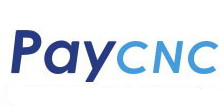How to improve accuracy by CNC programming
Eliminate the influence of tolerance zone position
Many dimensions of the parts are marked with tolerances, and the position of the tolerance zone cannot be consistent, and the CNC program is generally compiled according to the part outline, that is, according to the basic size of the part, ignoring the influence of the tolerance zone position. In this way, even if the precision of the CNC machine tool is very high, the processed parts may not meet its dimensional tolerance requirements.
The 40 size is the base shaft system, the ?35 size is the base hole system transition fit, the ?25 size is the base hole system interference fit, and the tolerance zones of the three dimensions are different. If the programming is still based on the basic size ?40, ?35 and ?25, regardless of the influence of the tolerance zone position, it may make a certain size processing not meet the requirements. There are two ways to solve the problem:
1). Programming according to the basic size, using radius compensation to consider the position of the tolerance zone, that is, calculating and programming according to the basic size of the part, using the same turning tool to machine various external circles, and when processing the dimensions of different tolerance zone positions, different tools are used Radius compensation value. In this method, you must first know the radius of the tool tip arc (the machining path of this part is parallel to the X axis and Z axis, you don't need to know the radius of the tool tip arc), so it is inconvenient to use and can only be applied to some CNC systems.
2). Change the basic size and the position of the tolerance zone, that is, adjust the basic size and the position of the tolerance zone on the premise that the limit size of the part remains unchanged. Generally adjust according to the symmetrical tolerance zone, the adjusted basic size and tolerance. The programming is carried out according to the adjusted basic size, so that the same turning tool and the same tool compensation value (the processing path in this example is parallel to the X axis and Z axis, and the tool compensation is not required) can ensure the machining accuracy. Of course, if the part needs to be finished (such as fine grinding) in the end, in order to ensure sufficient grinding allowance, the basic size can also be slightly enlarged (at this time, the tolerance zone is asymmetric).
Eliminate the influence of machine tool clearance
When the CNC machine tool is used for a long time or due to the structure of its own transmission system, there may be a reverse dead zone error. At this time, some measures can be taken during CNC programming and processing to eliminate the reverse dead zone error and improve the processing accuracy. Especially when the dimensional accuracy of the processed parts is close to the repeated positioning accuracy of the CNC machine tool, it is more important.
1) The contour of the finished workpiece is a→b→c→d, and the tool movement path shown is not appropriate, because the movement direction from ①→② is opposite to ③→④, a backlash will occur, as shown in the figure The tool movement route shown in 5, during finishing, the tool moves in the radial direction to maintain a continuous increasing trend of size, and moves in the axial direction to maintain a continuous trend of size to the left, which eliminates the influence of the backlash of the machine tool.
2) The hole distances of ①, ②, ③, and ④ of the workpiece are required to be accurate. Set the origin of the programming coordinate system at the center of the workpiece, and the tool setting point (program starting point) is also the same point. If the tool movement route is: origin O→①→②→③→④ hole, a backlash will be generated, if it is changed to: origin O→A→①→②→③→④, that is, the dimensions in the X direction and the Y direction Maintain a continuous decreasing or increasing trend, if it is difficult to maintain continuous increasing and decreasing programming. A transition point should be added, as shown in point B in Fig. 7. The tool movement is A→①→②→③→④ to eliminate the machine backlash.
Reduce the impact of system cumulative error
In the process of rapid movement and interpolation, the numerical control system will produce cumulative errors. When it reaches a certain value, it will cause the machine tool to produce movement and positioning errors, which will affect the machining accuracy. The following measures can reduce the cumulative error of the CNC system.
Try to use absolute programming. Absolute programming is based on a certain fixed point (workpiece coordinate origin), and each section of the program and the entire machining process is based on this. The incremental programming is based on the previous point, and continuous execution of multiple programs will inevitably produce cumulative errors.
Inserting the reference point return instruction When the machine tool returns to the reference point, the coordinates will be cleared, thus eliminating the accumulated error of the numerical control system calculation. Properly inserting the reference point return instruction in a long program is beneficial to ensure the machining accuracy. When there is a tool change request, you can go back to the reference point to change the tool, so you can do two things with one stone.
Many dimensions of the parts are marked with tolerances, and the position of the tolerance zone cannot be consistent, and the CNC program is generally compiled according to the part outline, that is, according to the basic size of the part, ignoring the influence of the tolerance zone position. In this way, even if the precision of the CNC machine tool is very high, the processed parts may not meet its dimensional tolerance requirements.
The 40 size is the base shaft system, the ?35 size is the base hole system transition fit, the ?25 size is the base hole system interference fit, and the tolerance zones of the three dimensions are different. If the programming is still based on the basic size ?40, ?35 and ?25, regardless of the influence of the tolerance zone position, it may make a certain size processing not meet the requirements. There are two ways to solve the problem:
1). Programming according to the basic size, using radius compensation to consider the position of the tolerance zone, that is, calculating and programming according to the basic size of the part, using the same turning tool to machine various external circles, and when processing the dimensions of different tolerance zone positions, different tools are used Radius compensation value. In this method, you must first know the radius of the tool tip arc (the machining path of this part is parallel to the X axis and Z axis, you don't need to know the radius of the tool tip arc), so it is inconvenient to use and can only be applied to some CNC systems.
2). Change the basic size and the position of the tolerance zone, that is, adjust the basic size and the position of the tolerance zone on the premise that the limit size of the part remains unchanged. Generally adjust according to the symmetrical tolerance zone, the adjusted basic size and tolerance. The programming is carried out according to the adjusted basic size, so that the same turning tool and the same tool compensation value (the processing path in this example is parallel to the X axis and Z axis, and the tool compensation is not required) can ensure the machining accuracy. Of course, if the part needs to be finished (such as fine grinding) in the end, in order to ensure sufficient grinding allowance, the basic size can also be slightly enlarged (at this time, the tolerance zone is asymmetric).
Eliminate the influence of machine tool clearance
When the CNC machine tool is used for a long time or due to the structure of its own transmission system, there may be a reverse dead zone error. At this time, some measures can be taken during CNC programming and processing to eliminate the reverse dead zone error and improve the processing accuracy. Especially when the dimensional accuracy of the processed parts is close to the repeated positioning accuracy of the CNC machine tool, it is more important.
1) The contour of the finished workpiece is a→b→c→d, and the tool movement path shown is not appropriate, because the movement direction from ①→② is opposite to ③→④, a backlash will occur, as shown in the figure The tool movement route shown in 5, during finishing, the tool moves in the radial direction to maintain a continuous increasing trend of size, and moves in the axial direction to maintain a continuous trend of size to the left, which eliminates the influence of the backlash of the machine tool.
2) The hole distances of ①, ②, ③, and ④ of the workpiece are required to be accurate. Set the origin of the programming coordinate system at the center of the workpiece, and the tool setting point (program starting point) is also the same point. If the tool movement route is: origin O→①→②→③→④ hole, a backlash will be generated, if it is changed to: origin O→A→①→②→③→④, that is, the dimensions in the X direction and the Y direction Maintain a continuous decreasing or increasing trend, if it is difficult to maintain continuous increasing and decreasing programming. A transition point should be added, as shown in point B in Fig. 7. The tool movement is A→①→②→③→④ to eliminate the machine backlash.
Reduce the impact of system cumulative error
In the process of rapid movement and interpolation, the numerical control system will produce cumulative errors. When it reaches a certain value, it will cause the machine tool to produce movement and positioning errors, which will affect the machining accuracy. The following measures can reduce the cumulative error of the CNC system.
Try to use absolute programming. Absolute programming is based on a certain fixed point (workpiece coordinate origin), and each section of the program and the entire machining process is based on this. The incremental programming is based on the previous point, and continuous execution of multiple programs will inevitably produce cumulative errors.
Inserting the reference point return instruction When the machine tool returns to the reference point, the coordinates will be cleared, thus eliminating the accumulated error of the numerical control system calculation. Properly inserting the reference point return instruction in a long program is beneficial to ensure the machining accuracy. When there is a tool change request, you can go back to the reference point to change the tool, so you can do two things with one stone.
 USD
USD




